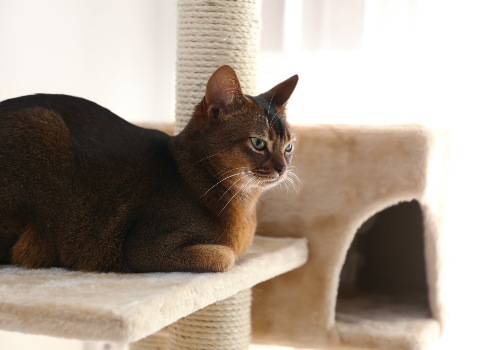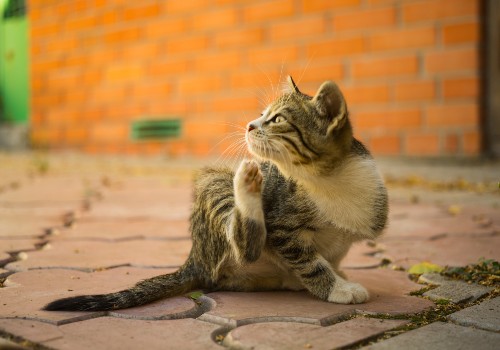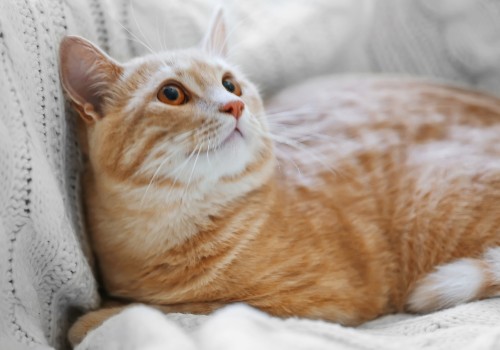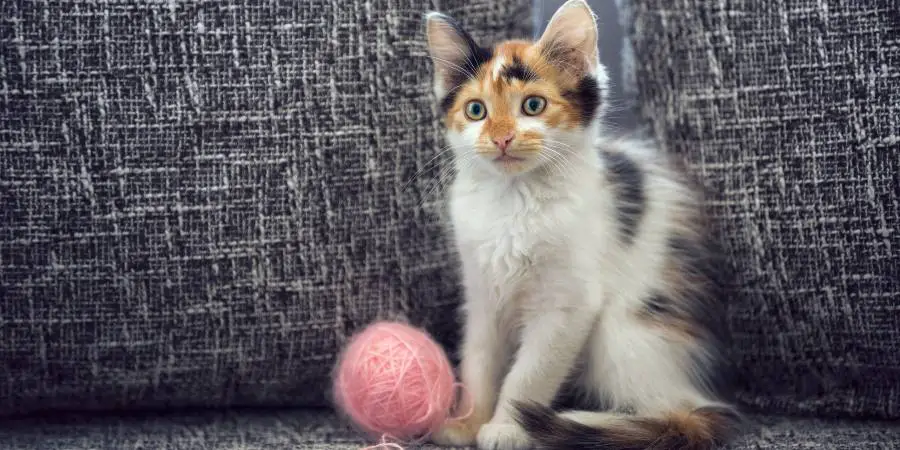Fleas can irritate both you and your indoor cat. Often, these bugs have an adaptable lifecycle, and they can be incredibly resilient. Most individuals with indoor cats presume that their cats are protected from the risks of fleas. However, this isn’t always the case, as fleas can still invade your home and attack your indoor cat!
Keeping your cat indoors can be beneficial to your fur kitties. Nevertheless, most cat owners tend to bypass important flea prevention precautions. After all, they assume it isn’t crucial because they are always indoors.
However, just because your pet is always kept indoors doesn’t imply fleas can’t attack them! And if they attack your pet, you’ll have trouble eliminating them. That’s why you must take preventative measures to avoid an infestation.
Truth be told, all indoor or outdoor cats are at risk of getting parasites, including fleas, ticks, and intestinal worms! Therefore, you need to understand the possible ways through which your indoor cat is likely to pick up these parasites to prevent them from occurring.
Below are key ways your indoor cat can get fleas and how to prevent them.
1. Other Pets

The most obvious way your indoor cat can get fleas is through other pets, including dogs, birds, and other cats. Parasites habiting on your other pets, like dogs, can jump and start feeding on your indoor cat while laying eggs on your couches. This implies that other pets can pose a risk to your indoor cat. That’s why you need to ensure that your visitors’ pets are given a preventative flea vaccination before allowing them into your house.
Thankfully, there are various steps you can implement to minimize the likelihood of your indoor cat being infested with fleas. First, you can start by regularly giving all your animals, including your indoor cat, an anti-parasite treatment. For instance, you can use Advantage Spot-on to eradicate fleas that have infested your cat within 24 hours! You can apply this treatment once every month to keep fleas away, thus safeguarding your indoor cat from infestation. However, before you apply any flea treatment, ensure you contact your vet and thoroughly read the instructions on the label.
2. Wild Animals

Often, your indoor cat might not get a chance to go hunting on the bushes nearby. However, they can get a chance to stalk wild animals even in your home in one way or another! Wild animals, especially rodents, can easily find their way into your home. This is true if your home is situated in the countryside or has an attic. Whereas these rodents are not likely to hang around a cat, they are hotbeds that harbor fleas. Thus, rodents are likely to drop off flea eggs in your home whenever they pay an uninvited visit! Then, the eggs can hatch and infest your indoor cat even without it leaving your home.
On their own, cats are excellent repellants to rodents. However, you can assist in keeping them off by avoiding to litter food and waste on your countertops. Also, ensure your kitchen bin is closed with a heavy lid; you empty it daily and try to keep it outdoors. Furthermore, you should ensure that all food scraps are speedily relocated to the compost pile or discarded away.
If rodents remain a problem after taking all these precautions, try to check your home for possible entry points, close gaps in windows and doors. Also, you can talk to a pest control expert to help you control these rodents using pesticides.
3. Relocating into a New Home

The mere fact that people and pets have moved out of the home you’re moving into doesn’t imply that fleas have moved out too! Flea eggs often take as long as 12 months to evolve into flea larvae, pupae, and a fully-grown flea. Also, flea pupae can stay dormant for several months until they get a host to infest.
Therefore, whenever you’re relocating to a new home, assume the worst and take the necessary precautions to eliminate any flea eggs that might be in the new home. Ensure you thoroughly clean your new home as if it is infested with fleas. If possible, contact professional cleaners to disinfect and clear all fleas and bug eggs before inhabiting your new home.
4. Humans
Whereas the regular cat flea favors furry hosts, they will readily bite people and hitch a trip on their clothing. When they find a more favorable host nearby, they’ll easily jump to relocate from a human body to your indoor cat.
Although it’s impractical to check each individual that visits your home for fleas, you can take certain precautions to minimize the likelihood of flea infestation. For instance, by consistently maintaining the cleanliness of your home, you can easily eradicate flea eggs and any invaders that visitors may bring along. Also, ensure you clean guest bed sheets and towels once they leave. Furthermore, regularly wash your cat’s bedding using hot water to kill any flea eggs and flea larvae.
Finally, make it a habit to groom your indoor cat using a flea comb. While grooming your cat, ensure you tenderly separate the fur to check for any signs of fleas and fleabites. If you spot any alarming signs, take quick action to remedy the situation.
5. Trips Out

At some point, your indoor cat is likely to get outside, even if temporarily. For instance, when taking your indoor cat to a pet sitter, groomer, or vet, you’ll have to take them outdoors. During this period, your indoor cat can interact with other pets and may get fleas. Here, the most effective precaution is regularly having your cats undergo flea treatment. That way, you can keep fleas in check and ensure your pet stays healthy.
6. Second-hand Products
Pets, particularly cats and dogs, like to rest on your soft furniture. This poses risks because if your cat is infested with fleas, several eggs can fall off into the surrounding. Whereas your cat might be free from fleas, buying second-hand products can become the source of these bugs! Therefore, whenever you decide to buy second-hand items from antique stores, ensure they’re washed on a hot cycle to eliminate fleas and destroy flea eggs. Otherwise, you might be carrying along lots of fleas that will eventually infest your indoor cat.
How to Detect If Your Cat is infested with Fleas
Obviously, as a pet owner, you’re curious about finding out if your indoor cat has fleas. Well, there are several ways to identify if your cat has fleas. For instance, fleabites are itchy and make your cat uncomfortable. Therefore, if you see your cat scratching its skin than normal, it’s likely that they have fleas!
In a nutshell, key signs that your cat has fleas include hair loss around their head and tail, excessive scratching, and irritated skin near the neckline.
Ways You Can Eliminate Fleas in Your Home

Just considering all the ways your cat can pick up fleas can make you worried about the health of your little friend! Luckily, there are also ways you can get rid of these unwelcome bugs from your home. Some of these ways are highlighted as follows;
1. Mow and Clean Your Lawn and Yard
Parasites, such as ticks, often prefer to hang out in damp sections or bushy areas in your home. That’s why you must mow your lawn regularly to minimize the likelihood of parasites inhabiting your home. Likewise, you should ensure your yard is kept clear of any leaves and mounds of rocks that create a perfect breeding ground for fleas. Ultimately, this will help reduce the likelihood of fleas and other parasites from reproducing.
2. Use Natural Remedies to Control Fleas
You can use natural ways to repel away fleas and other parasites that may infest your indoor cat. For instance, the smell of Cedar Chips can help repel away fleas and ticks that could otherwise attack your pet. Therefore, you can scatter Cedar Chips in shaded sections beneath your porch and outdoor furniture.
3. Vacuum Clean Your Home Regularly
Vacuum cleaning is a useful strategy that can help you keep parasites, including fleas, in check, particularly if your floor is carpeted. It’s recommendable to vacuum clean your home every week while paying close attention to hidden sections of your home.
4. Groom Your Indoor Cat Regularly
Consistent grooming of your indoor cat can assist in keeping them tidy and enables you to search for any symptoms of fleas. Besides, grooming your cat helps you bond with them, thus enhancing the relationship you have.
Concluding Remarks

At this point, you’ve noticed that fleas are tricky bugs that can sneak themselves into your home in various ways. For instance, they can hitch-hike on unwelcome rodents, lay eggs in soft furniture, or be brought into your home by visitors’ pets.
Additionally, your indoor cats may not be 100%, indoor creatures. That’s because, at some point, you may need to take them out to groomer, vet, or cattery trips where they’re likely to get fleas! If your indoor cat and home are infested with these critters, it can be not easy to get rid of them.
Thus, you should implement preventative measures to prevent these bugs from infesting your indoor cat. Here, you can use natural flea control methods like Cedar Chips, vacuum clean your floors each week, and groom your indoor cat regularly. Ultimately, using these strategies, you can reduce if not eliminate all fleas that may infest your indoor cat in your home.
How to Get Rid of Fleas on a Cat and in Your House (Video)
"In ancient times cats were worshipped as gods; they have not forgotten this."
-- Terry Pratchett





